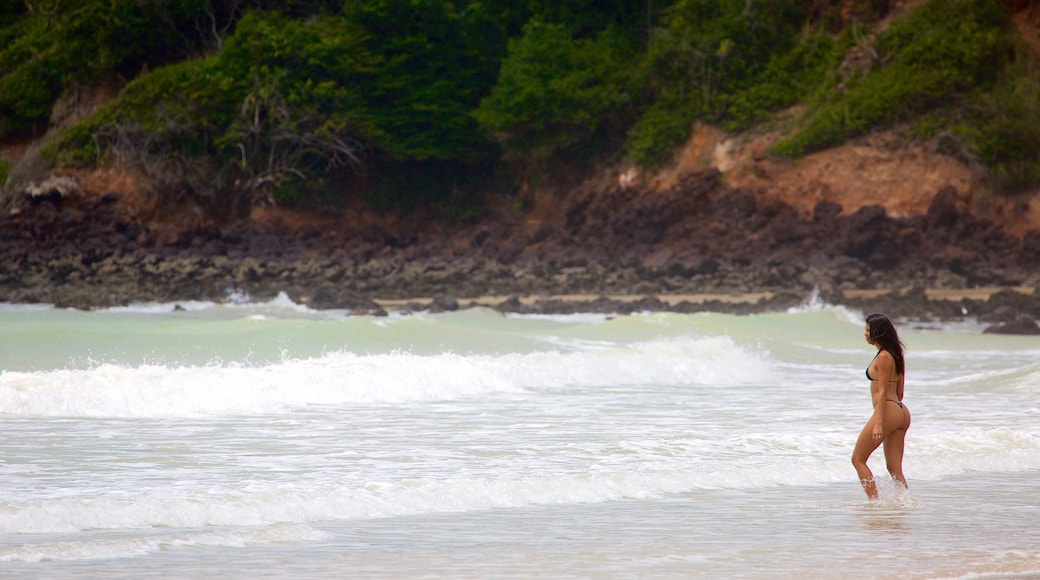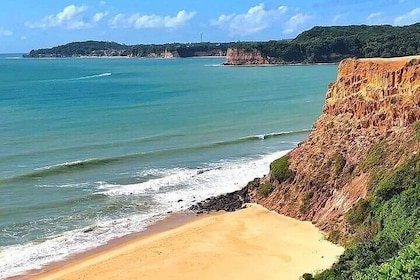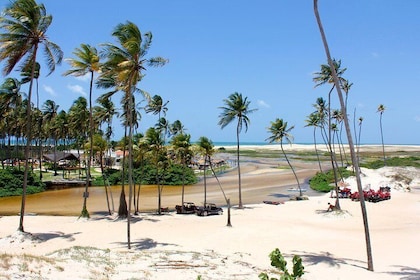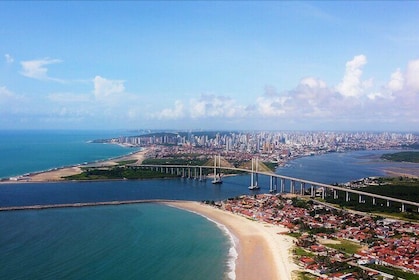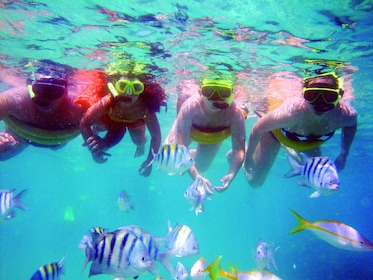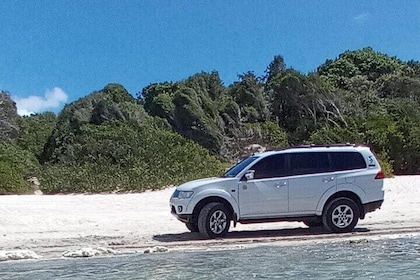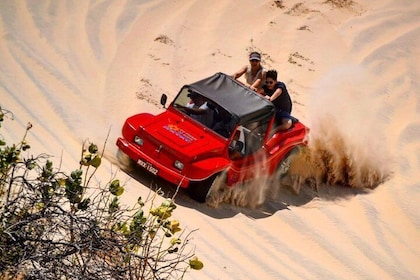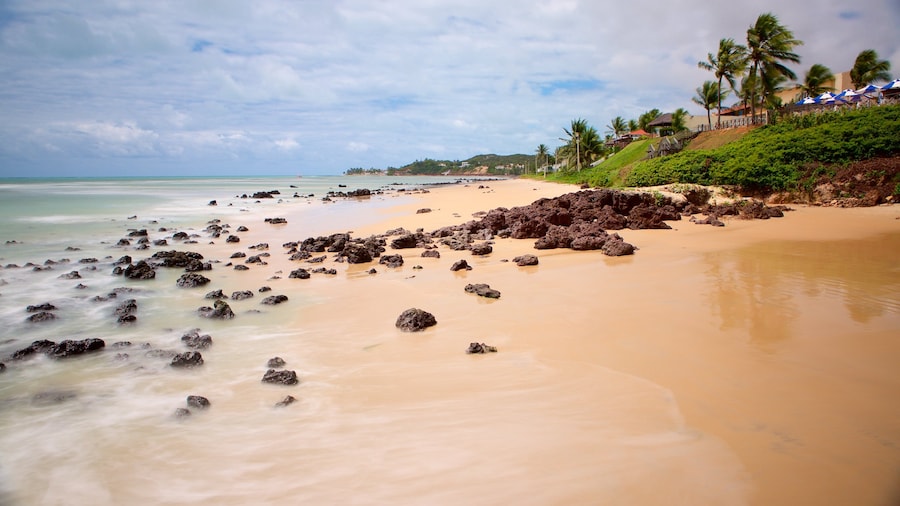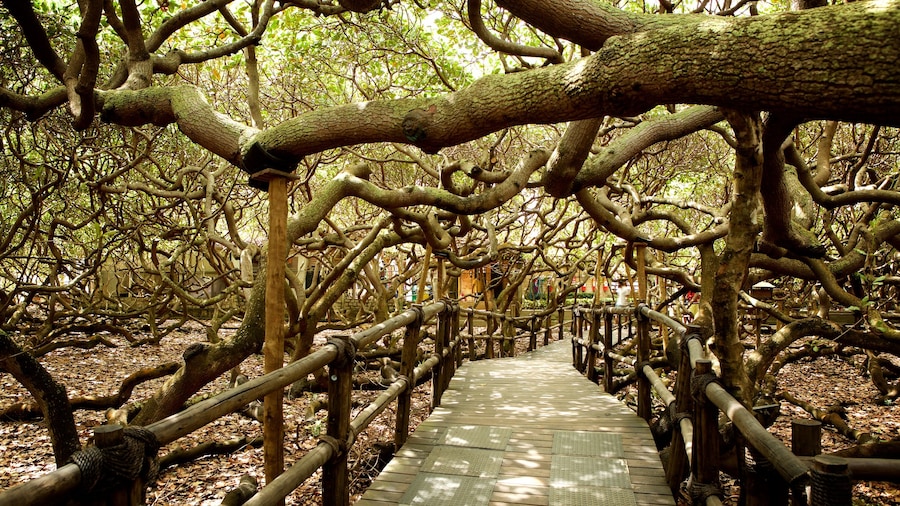Enjoy the view from the jagged cliffs overlooking this scenic beach known for its serene ambiance and surfing options.
With its steep sand dunes and explosive waves, Cotovelo Beach is an idyllic hangout for surfers, sand boarders and body boarders. Majestic cliffs loom over intriguing rocky formations that decorate the scenic stretch of sand. Appreciate the serene setting of this tropical oasis, where palm trees grow and sandy hills sprout.
Swim with your friends in the deep water and watch surfers riding the waves. Bring food for a picnic with a view of the cliffs and the sound of the water as accompaniment. The beach has clean water and a relaxed atmosphere. Capture photos of the sandy hills and palm trees enclosing the bay.
Note that the water covers most of the beach during high tide. When the tide is out, bring the kids beachcombing along the sandy bay in the hunt for treasures. Otherworldly rocks provide ideal natural climbing frames. Clamber up the temple-like sand dunes and slide down at great speeds on a body board. Stay into the evening for the picturesque sunset in this serene area. Go for a romantic stroll with your partner along the coast.
The bay has several restaurants specializing in seafood, including crab and the small fried ginga fish. Stay at one of the hotels in the fairly built-up area behind the sandy stretch.
Access this beach for free. It remains open at all times. This is one of mainland South America’s closest points to the continent of Africa, which is 2,850 miles (4,590 kilometers) to the east. Before the break-up of the supercontinent Pangaea, this easternmost point of South America was adjacent to what is now Nigeria and Cameroon.
Cotovelo Beach is 15 miles (25 kilometers) south along the coast from the city of Natal. Drive to the undulating stretch of sand in about 40 minutes or cycle along the scenic coastal route. Leave the car at one of the designated parking lots beside the beach. While you’re here, visit nearby sights, such as the Pirangi Cashew Tree.

